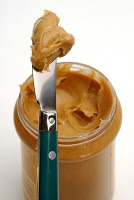Peanut butter can be a healthy choice, but you have to read the labels; gimmicks to improve taste not the best for nutrition

Peanut butter has long been considered a healthy food choice, and for the most part it still is, but with the advent of low-fat brands, flavored peanut butters and companies adding preservatives to lengthen shelf life, not all peanut butters are equally nutritious, Jose Aguayo and Ryan Canavan report for the Environmental Working Group.
Originally, peanut butter was made from one ingredient: ground roasted peanuts. But now, commercial brands have added sugars, salt, hydrogenated oils and other preservatives, and some are less acceptable than others.
For example, “reduced-fat peanut butters are some of the worst offenders,” the authors write. To reduce the fat calories, manufacturers will often take out the healthy monosaturated fats but then add sugar and salt to improve the taste.
Most commercial brands also add hydrogenated oils, as well as preservatives like potassium sorbate, to extend peanut butter’s shelf life. The authors note that over 80 percent of peanut-butter brands have hydrogenated oils, which introduce “artery-clogging saturated and trans fats to peanut butter’s otherwise-healthy fat profile.”
“For a healthy heart, the American Heart Association recommends avoiding foods with hydrogenated oils, including peanut butter,” the authors write. So, read the labels when choosing a peanut butter to determine which ones have the least salt, sugar, hydrogenated oils and preservatives, remembering that the healthiest peanut butters are made from just ground roasted peanuts and a pinch of salt.
It should also be noted that while peanut butter can be a healthy choice, it is high in calories and should be eaten in moderation. A standard serving of peanut butter is 2 tablespoons, which is about the size of a golf ball. This amount has about 190 calories.
